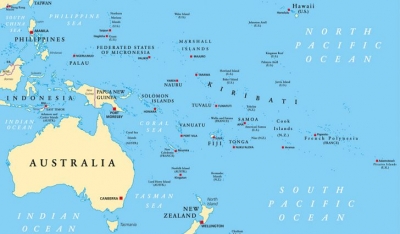
The second largest continent after Asia, Africa is almost completely surrounded by water, apart from the narrow point at which it joins on to Asia. The north of the continent is mostly hot, barren desert, edged with coastal areas that are cooler and wetter in winter.
Further south, the desert gives way to areas of flat grassland. The Equator runs right through the centre of Africa. The countries on or close to the Equator are dominated by the largest area of tropical rainforest outside South America. Here the climate is hot and wet.
The rainforest is home to many different plants and animals, including gorillas and chimpanzees. Many rivers weave their way through central Africa. To the east and south are large areas of open grassland scattered with trees, known as savanna. Animals such as elephants, zebra and wildebeest, roam the savanna, along with predators such as lions, wild dogs and hyenas.
AFRICAN PEOPLES
North of the Sahara desert, the people of Africa are mainly Arabs and Berbers, who follow the religion of Islam. South of the Sahara, most people are black. They follow a variety of religions. Much of Africa was at one time controlled by Europe, and today people of European descent still live there, mostly in the south.
Africa exports its natural resources of metals and oil, as well as crops such as coffee and cocoa. However, many African countries are poor compared to the rest of the world. Few have established manufacturing industries. Most people live in the countryside, and rely on producing only enough crops, or farming enough cattle to support their families. They suffer from frequent droughts, floods and periods of starvation. Wars between and within countries also threaten their lives.
SAHARA DESERT
The world’s largest desert, the Sahara stretches across an area of Northern Africa that is almost the size of the USA. It is constantly growing larger as the sparse grassland at its edges dies away. The Sahara is a hot desert, where rain may fail to fall for years on end. During the day, temperatures can reach over 50°C in the shade, but nights are often cold. There are areas of sand that often drift into large dunes, but much of the Sahara is made up of rocky ground and mountains.
Despite these harsh conditions, the Sahara desert is not without life. Animals that are specially adapted for life with little water and intense heat can survive there. Many take shelter in burrows during the day, coming out at night to feed.
People also live in the Sahara desert. Small towns are able to survive around oases in the desert. Groups of nomads also travel across the harsh landscape to trade in the town markets. For thousands of years, they carried their goods and supplies by camel, an animal that can cope extremely well with desert life. It also provided the nomads with milk and meat. Today motor vehicles are more often used to cross the desert.
Picture Credit : Google










